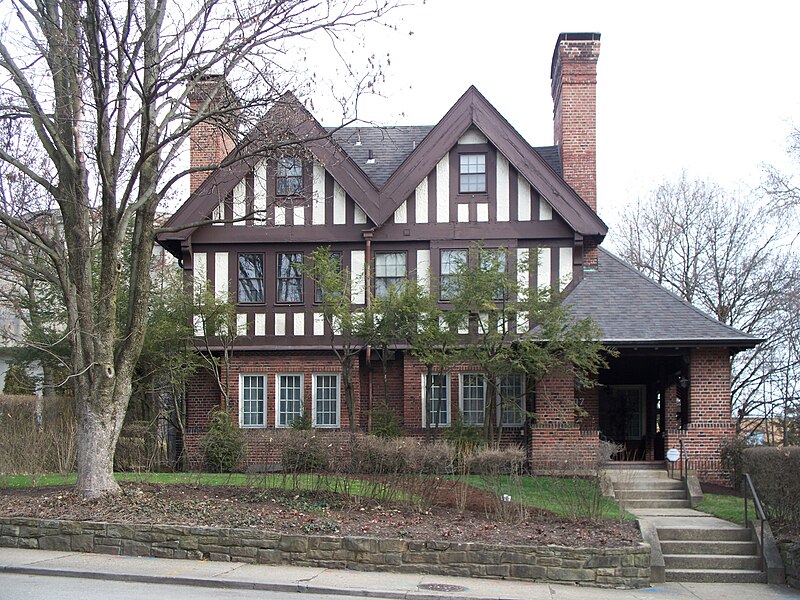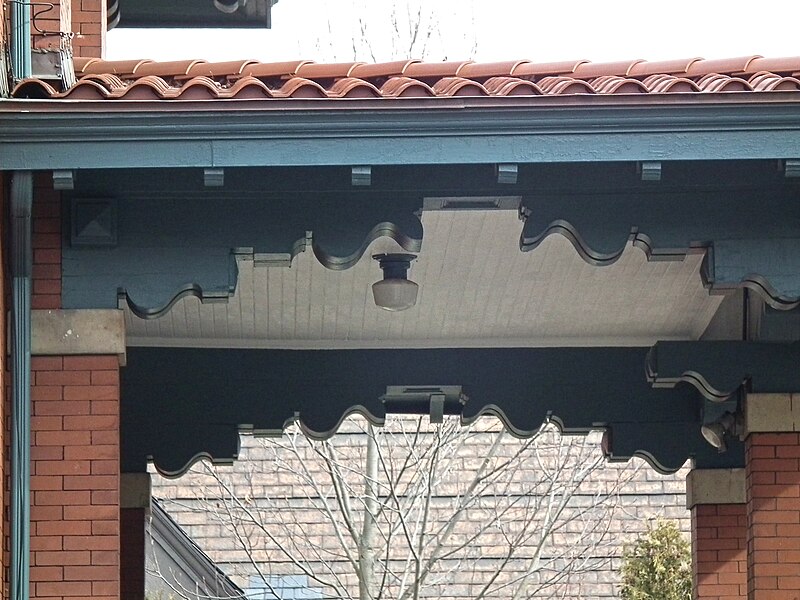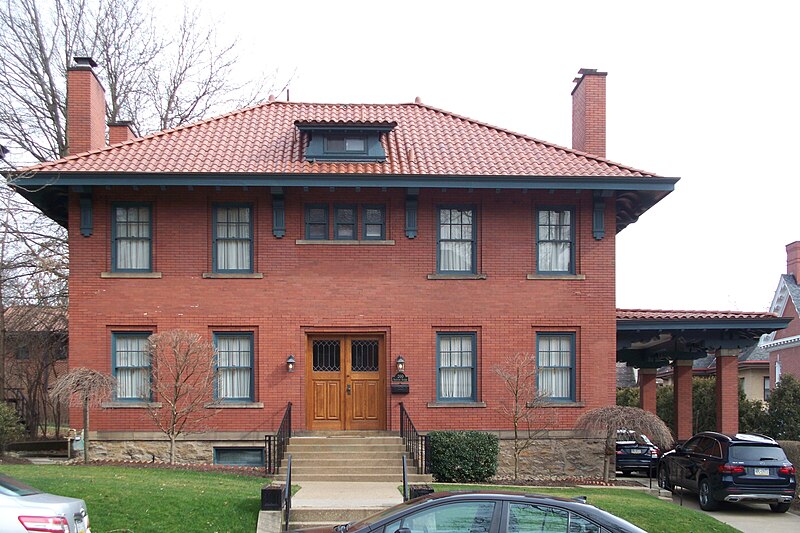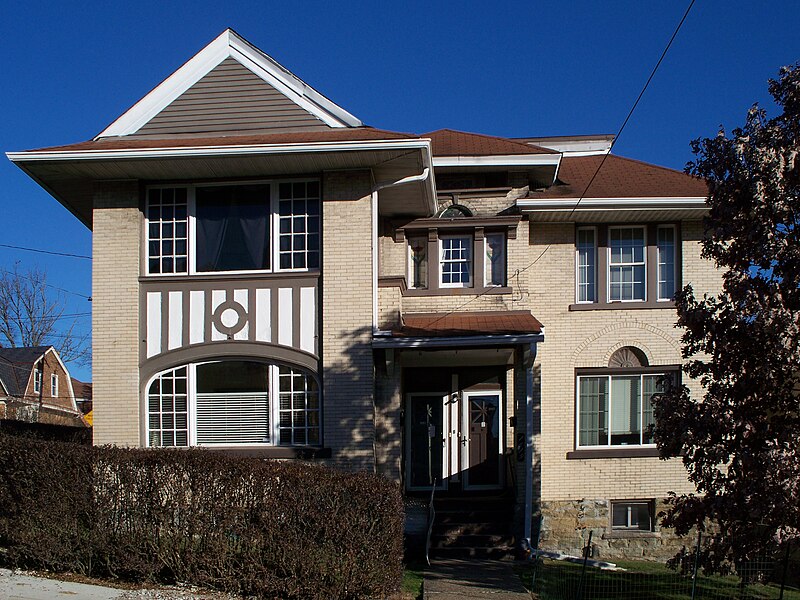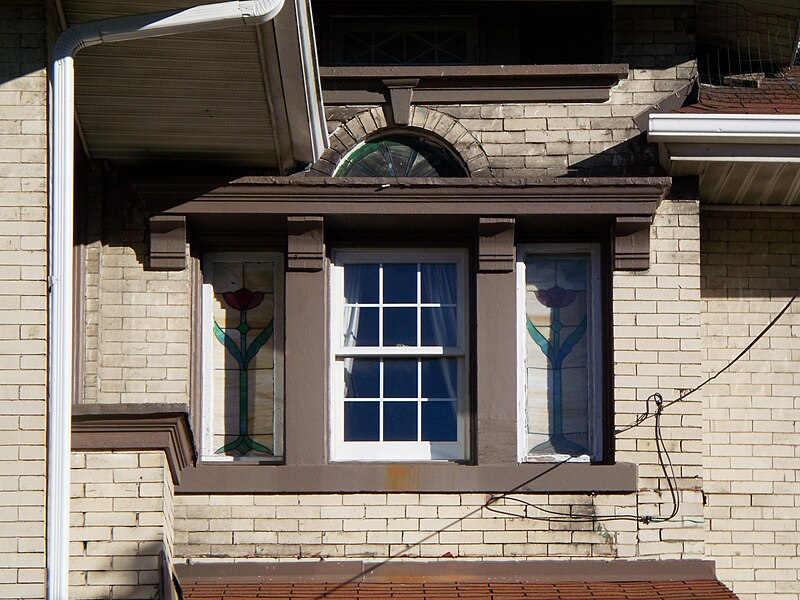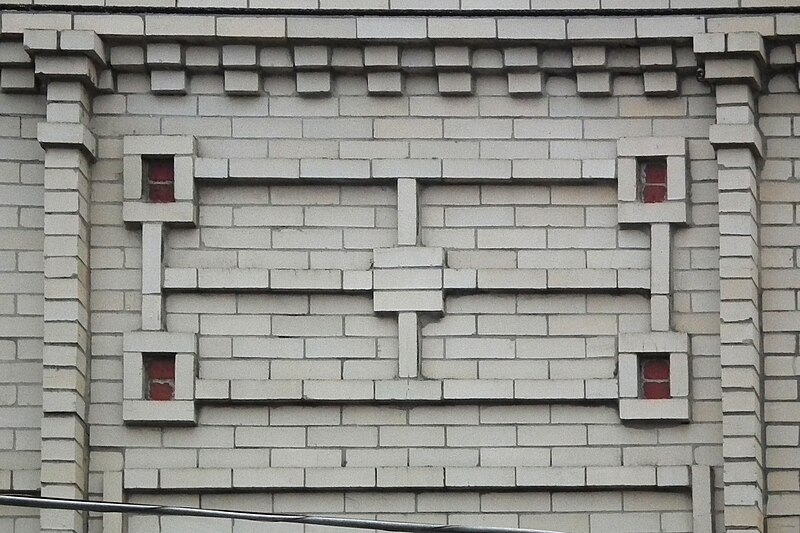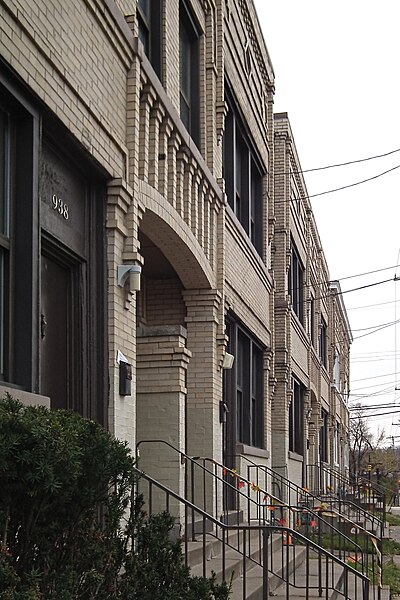
When our local historians speak of the early adopters of modernism among Pittsburgh’s architects, they usually mention Titus de Bobula, Frederick Scheibler, and Kiehnel & Elliott. Old Pa Pitt would propose to add Charles Bier to that short list. His work is not as imaginative as the best work of Scheibler, but that is about the worst that can be said for him. In the early twentieth century, Bier gave us a large number of buildings influenced by German trends in Art Nouveau, and he developed a distinctive style of his own—one that put an Art Nouveau spin on Jacobean forms. This apartment building is a good sample of his work. It was built in 1910 with six luxurious units.1


The entrance especially looks like something from a magazine like Deutsche Kunst und Dekoration. (We know those German and Austrian art magazines circulated among our architects in Pittsburgh; one of them actually took notice of Frederick Scheibler.) The oversized classical brackets are a whimsical touch.

These lanterns seem to be modern replacements, since ghosts of gaslights are visible behind them.


Update: Our correspondent David Schwing sends this photograph of the Herford from the Press article, showing the building when it was new.

Comments













